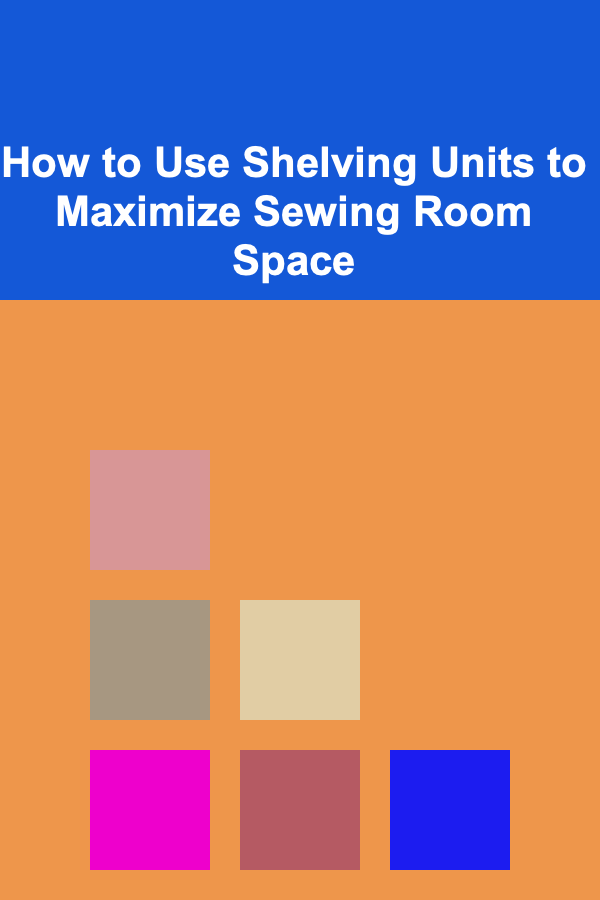
10 Essential Tasks for a Low-Maintenance Summer Yard
ebook include PDF & Audio bundle (Micro Guide)
$12.99$10.99
Limited Time Offer! Order within the next:

During the summer months, keeping your yard looking fresh and inviting can become a daunting task, especially when dealing with high temperatures and the hustle and bustle of daily life. Fortunately, with a bit of planning and some simple strategies, you can enjoy a beautiful outdoor space without investing countless hours in maintenance. The key to achieving a low-maintenance yard during summer is to focus on tasks that reduce long-term care while still ensuring the space remains visually appealing.
In this article, we'll explore 10 essential tasks that will help you create a low-maintenance summer yard. From smart plant selection to efficient watering strategies, these tips will ensure your yard stays healthy and vibrant while minimizing the time and effort required for upkeep.
Choose Low-Maintenance Plants
One of the most significant steps in creating a low-maintenance summer yard is selecting plants that are well-suited to your climate and require minimal care. Opt for native plants, which tend to thrive in local conditions, need less water, and are more resistant to pests. Additionally, many native plants have deep root systems, which help them withstand dry spells and reduce the need for constant watering.
When selecting plants, consider:
- Drought-resistant varieties: Look for succulents, lavender, or ornamental grasses that can tolerate dry conditions.
- Perennials: These plants come back year after year, reducing the need for replanting.
- Ground covers: Plants like creeping thyme or clover spread quickly and help suppress weeds while covering the ground.
- Shrubs and evergreen plants: They provide year-round interest without requiring frequent pruning.
By incorporating low-maintenance plants into your landscape, you'll not only reduce the amount of time spent on upkeep but also ensure that your yard remains beautiful with minimal effort.
Mulch Your Flower Beds
Mulching is an easy and highly effective way to reduce maintenance in your summer yard. Mulch helps retain moisture, suppresses weeds, and regulates soil temperature, which is particularly important during the hot summer months. By reducing the growth of weeds, you'll spend less time pulling them and allow your plants to flourish without competition.
There are various types of mulch to choose from, including:
- Organic mulches: Wood chips, straw, or shredded leaves add nutrients to the soil as they decompose.
- Inorganic mulches: Rocks, gravel, or rubber are long-lasting options that don't need to be replaced frequently.
Be sure to apply mulch around your plants and in flower beds, but avoid piling it up against plant stems or tree trunks, as this can lead to rot.
Water Smartly
Watering is one of the most time-consuming tasks in yard care, but it can also be one of the most efficient with the right strategies. To reduce the time spent on watering and ensure your plants receive adequate moisture, consider implementing the following techniques:
- Install a drip irrigation system: This system delivers water directly to the roots of your plants, reducing water waste and ensuring deep watering. It's especially useful for garden beds, shrubs, and even lawns.
- Use soaker hoses: Similar to drip irrigation, soaker hoses release water slowly and evenly, ensuring thorough watering of your plants.
- Water early or late in the day: Watering in the early morning or late evening prevents evaporation and ensures that your plants get the moisture they need without it evaporating too quickly in the heat of the day.
- Group plants by their water needs: Plant drought-tolerant species together, and place plants that require more water in areas where they can receive the appropriate care.
By using efficient watering methods and understanding your plants' needs, you'll conserve water while keeping your yard healthy and vibrant.
Reduce Lawn Care with Ground Covers
Lawns require significant time and effort to maintain, especially during the summer months. Between regular mowing, fertilizing, and watering, a traditional lawn can quickly become a time-consuming responsibility. To reduce lawn maintenance, consider replacing part or all of your lawn with ground covers that are more sustainable and require less upkeep.
Some great ground cover options include:
- Creeping thyme: A fragrant and drought-resistant option that forms a dense mat.
- Clover: Not only does it create a beautiful green ground cover, but it also fixes nitrogen in the soil, improving soil health.
- Sedum: A succulent ground cover that thrives in full sun and is extremely drought-tolerant.
By replacing traditional turfgrass with low-maintenance ground covers, you'll reduce the amount of water, mowing, and fertilizing your lawn needs, making it much easier to care for.
Maintain Healthy Soil
Healthy soil is the foundation of a low-maintenance yard. By ensuring that your soil is nutrient-rich and well-draining, you can reduce the need for frequent fertilization and improve the overall health of your plants. Here are a few ways to maintain healthy soil in your yard:
- Test your soil: Soil testing kits are inexpensive and help you understand the pH and nutrient levels in your soil. This will allow you to adjust your soil's composition to better support plant growth.
- Add organic matter: Incorporating compost or organic matter into your soil improves drainage, boosts nutrient levels, and enhances soil structure.
- Avoid soil compaction: Limit foot traffic in garden beds, and avoid working the soil when it's wet to prevent compaction.
- Use natural fertilizers: If needed, opt for organic fertilizers or compost to enrich the soil naturally, avoiding the use of chemicals.
A soil that is rich in organic matter and well-balanced will reduce the amount of effort you need to put into fertilizing and watering, ultimately leading to a more sustainable, low-maintenance yard.
Create a Low-Maintenance Garden Design
A thoughtfully designed garden can save you a lot of time and effort. When planning your garden, focus on layout and plant placement that reduces the need for constant maintenance. Some ideas for a low-maintenance garden design include:
- Group plants with similar needs: Place plants with similar water, light, and soil requirements together to simplify watering and care.
- Use raised beds: Raised garden beds provide better drainage, reduce weed growth, and are easier to maintain than traditional garden plots.
- Incorporate hardscaping: Pathways, patios, and garden structures (such as trellises or fences) can add beauty to your yard while reducing the area that needs to be landscaped or watered.
- Limit plant varieties: Fewer plant varieties mean less complexity when it comes to care and maintenance. Choose a few key species that will thrive in your climate.
By creating a well-planned garden that minimizes the need for maintenance, you'll have a yard that is both beautiful and easy to care for.
Install Low-Maintenance Outdoor Furniture
Outdoor furniture is essential for creating a relaxing space in your yard, but it can also require significant maintenance, especially when exposed to the elements. To minimize upkeep, opt for durable, low-maintenance materials that are resistant to weathering. Some good choices include:
- Teak or cedar wood: These woods are naturally resistant to moisture and pests, and they develop a beautiful patina over time.
- Powder-coated metal: Strong and weather-resistant, powder-coated metal furniture is durable and requires minimal upkeep.
- Resin wicker: This material is lightweight, durable, and resistant to fading, making it perfect for outdoor furniture.
- Plastic or composite materials: These materials are easy to clean, won't rust, and are low-maintenance options for outdoor furniture.
By selecting furniture made from low-maintenance materials, you'll spend less time cleaning and more time enjoying your outdoor space.
Prune and Deadhead Regularly
While pruning and deadheading can seem like time-consuming tasks, they are crucial for keeping plants healthy and encouraging new growth. Regularly trimming dead or diseased branches will not only enhance the overall appearance of your yard but will also prevent issues that could require more significant interventions down the line.
To make pruning and deadheading easier:
- Use sharp tools: A good pair of pruning shears or a sharp saw will make the job quicker and cleaner.
- Trim early in the season: Early summer is an excellent time to prune, as it allows your plants to recover quickly and encourages new growth.
- Deadhead flowers regularly: Remove spent blooms to encourage the plant to produce more flowers and to prevent seed production, which can sap energy from the plant.
By staying on top of basic pruning and deadheading, you'll keep your plants healthy and reduce the amount of maintenance required in the long run.
Keep Weeds in Check
Weeds are one of the most persistent nuisances in any yard, especially during the summer when they thrive in warm conditions. To minimize the amount of time spent weeding, consider using a combination of preventative measures:
- Mulch: As mentioned earlier, mulch is an excellent tool for suppressing weed growth.
- Weed barriers: Landscape fabric placed under mulch or gravel can significantly reduce weed growth in garden beds and pathways.
- Manual weeding: While it may seem tedious, regularly removing weeds by hand or with a weeding tool can prevent them from becoming a larger issue.
- Natural weed killers: If you need to address stubborn weeds, consider using vinegar or boiling water as an organic, chemical-free solution.
By staying proactive about weed control, you can prevent weeds from taking over your yard and reduce the amount of time spent dealing with them.
Plan for Seasonal Transitions
To maintain a low-maintenance yard year-round, plan for seasonal transitions by selecting plants that provide visual interest across multiple seasons. Choose plants that bloom at different times of the year, provide attractive foliage in the fall, and even offer structure in winter. This approach allows you to enjoy your yard throughout the year without the need for frequent plant replacement or major seasonal maintenance.
Additionally, consider how your yard's design will adapt as the seasons change. This could involve installing structures like pergolas or shade sails to provide comfort in the heat, or preparing your plants for winter dormancy with a simple seasonal cleanup.
Conclusion
Creating a low-maintenance summer yard doesn't mean sacrificing beauty or functionality. By choosing the right plants, implementing efficient watering systems, reducing lawn areas, and planning your yard's design thoughtfully, you can enjoy a vibrant, healthy outdoor space with minimal effort. With a little planning and attention, you'll have more time to relax and enjoy the summer in your beautifully maintained yard.
Reading More From Our Other Websites
- [Scrapbooking Tip 101] DIY Quote Cards: Step-by-Step Projects for Adding Personalized Words to Any Scrapbook
- [Home Soundproofing 101] How to Achieve Effective Soundproofing with Soundproof Underlayment for Your Floors
- [Personal Care Tips 101] How to Use Hair Serum for Silky, Soft Hair
- [Paragliding Tip 101] Riding the Sky: Mastering Thermal Soaring Techniques for Paragliders
- [Tie-Dyeing Tip 101] How to Master the Batik‑Style Tie‑Dye Technique on Linen
- [Organization Tip 101] How to Create a Travel Inventory for Your Luggage
- [Beachcombing Tip 101] Unexpected Gems: Unusual Items You Might Uncover While Beachcombing
- [Personal Investment 101] How to Start Building a Business Investment Portfolio
- [Ziplining Tip 101] From Grounded to Gliding: Personal Stories of Overcoming Vertigo on the Zipline
- [Organization Tip 101] How to Create a DIY Bathroom Organizer with Household Items

How to Make a Checklist for Handling Accessible Content for Multiple Languages
Read More
How to Use Floating Shelves for Stylish Bathroom Storage
Read More
How to Use Security Signs and Stickers to Deter Criminals
Read More
How to Use Shelving Units to Maximize Sewing Room Space
Read More
Creating Interactive AR Content: A Comprehensive Guide
Read More
10 Tips for Securing Media Coverage in a Competitive Industry
Read MoreOther Products

How to Make a Checklist for Handling Accessible Content for Multiple Languages
Read More
How to Use Floating Shelves for Stylish Bathroom Storage
Read More
How to Use Security Signs and Stickers to Deter Criminals
Read More
How to Use Shelving Units to Maximize Sewing Room Space
Read More
Creating Interactive AR Content: A Comprehensive Guide
Read More